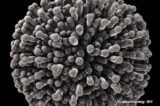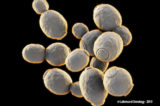
Biogenic Amines in Wine and how to control them
SPECIAL YEAST DERIVATES WITH GUARANTEED GLUTATIONE LEVELS
GLUTASTAR™ is a new natural SPECIFIC INACTIVATED YEAST WITH GUARANTEED GLUTATHIONE LEVEL, dedicated to the protection of white and rosé wines against oxidation. Added to the grapes or the must at the earliest stage in winemaking process, before the fermentation, the unique properties of GLUTASTAR™ confer to the wine an efficient protection against browning and aroma oxidation, a better aromatic expression, freshness, and a longer preservation of thiols and esters. The addition of GLUTASTAR™ contributes not only to enhance aromatic intensity and persistency thanks to the release of a high level of stabilizing peptides, but also to increase mouthfeel perception and wine thickness due to the polysaccharides enrichment, both in white and rosé wines
SIY with guaranteed GSH levels 2019 V3 (003)

Selected wine-making bacteria MBR ™: performance and adaptability for successful MLF’s
MBR Process Direct Inoculation

